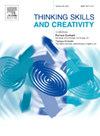在护理教育中应用临床案例指导、任务驱动的逃生室教学:准实验研究
IF 3.7
2区 教育学
Q1 Social Sciences
引用次数: 0
摘要
背景新时期,对护理人员的职业能力要求不再局限于传统的护理知识和技能,而是更加注重其多元化能力的培养和提升,如人文关怀能力、创新思维能力等。逃生室教学作为一种集游戏化教学、翻转学习、问题式学习于一体的新型教育模式,在有效培养和激发学生人文关怀能力和创造性思维方面发挥着重要作用。方法采用目的性抽样,选取2020级护理本科生108人作为研究对象,开展11次创新性密室逃脱教学活动。选取真实的临床病例,让学生团队沉浸在临床场景中完成以循环护理为主的密室逃脱游戏,比较干预前后两组学生的人文关怀和创新思维情况.结果教学结束后护生的人文关怀和创新思维得分明显优于密室逃脱教学前(P<0.05).结论基于CGTD的密室逃脱教学法应用于成人护理实践课程是一种将理论知识融入游戏的创新教学策略,能显著提高护理本科生的人文关怀能力和创造性思维能力。本文章由计算机程序翻译,如有差异,请以英文原文为准。
Application of clinical case-guided, task-driven escape room teaching in nursing education: A quasi-experimental study
Background
In the new era, the professional ability requirements for nursing personnel are no longer limited to traditional nursing knowledge and skills, but pay more attention to the cultivation and enhancement of their diversified abilities, such as humanistic caring ability, creative thinking, and so on. As a new type of education model that integrates gamification, flipped learning, and problem-based learning, escape room teaching plays an important role in effectively developing and stimulating students' humanistic care ability and creative thinking.
Purpose
To investigate the effectiveness of an Escape Room teaching approach, clinical cases (C) as guide (G) and task (T) as driver (D) , within the CGTD model in the undergraduate Adult Nursing course.
Method
Using purposive sampling, 108 undergraduate nursing students in the class of 2020 were selected as the study subjects, and 11 innovative escape room teaching activities were conducted. Real clinical cases were selected, so that the student teams were immersed in clinical scenarios to complete the escape room game focusing on circulatory care, and the humanistic caring and creative thinking of the students in the two groups were compared before and after the intervention.
Results
Nursing students' humanistic care and creative thinking scores at the end of the instruction were significantly better than those before the escape room instruction (P<0.05).
Conclusion
The use of the CGTD-based escape room teaching method applied to adult nursing practice courses is an innovative teaching strategy that integrates theoretical knowledge into the game, which can significantly improve undergraduate nursing students' humanistic caring ability and creative thinking.
求助全文
通过发布文献求助,成功后即可免费获取论文全文。
去求助
来源期刊

Thinking Skills and Creativity
EDUCATION & EDUCATIONAL RESEARCH-
CiteScore
6.40
自引率
16.20%
发文量
172
审稿时长
76 days
期刊介绍:
Thinking Skills and Creativity is a new journal providing a peer-reviewed forum for communication and debate for the community of researchers interested in teaching for thinking and creativity. Papers may represent a variety of theoretical perspectives and methodological approaches and may relate to any age level in a diversity of settings: formal and informal, education and work-based.
 求助内容:
求助内容: 应助结果提醒方式:
应助结果提醒方式:


